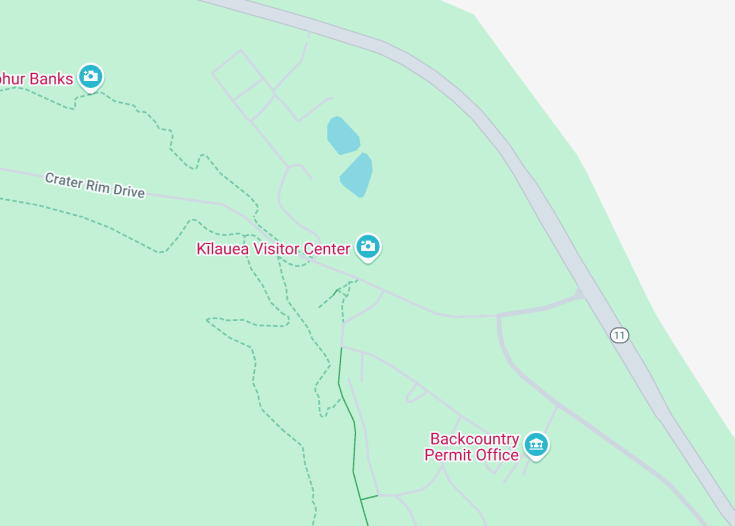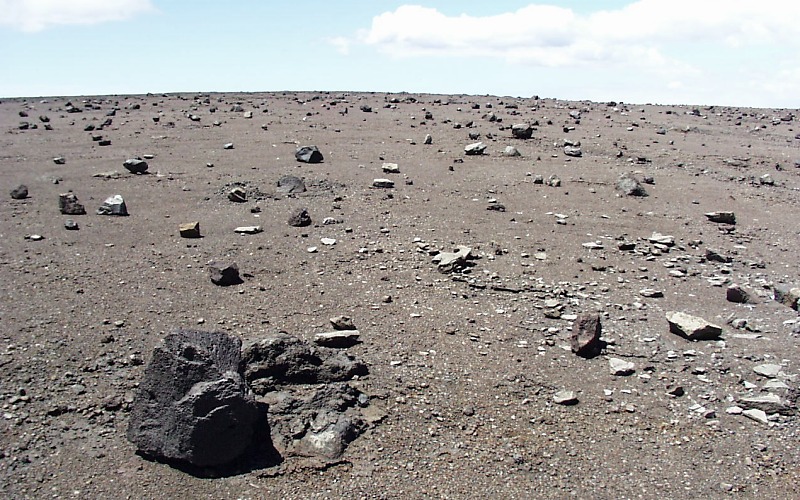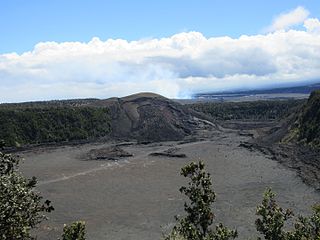Nestled within the renowned Hawai’i Volcanoes National Park, the Kīlauea Visitor Center serves as the gateway to this awe-inspiring volcanic landscape. It offers guests a comprehensive introduction to the park’s geological, biological, and cultural histories through interactive exhibits and informative displays. The center is an essential first stop for travelers intending to explore the diverse ecosystems and volcanic features of Kīlauea, one of the most active volcanoes in the world. Here, visitors can gather valuable insights on safety precautions, hiking trail information, and the current volcanic activity.
To enhance your visit, check the park’s website for any special events or ranger-led programs at the Kīlauea Visitor Center. These often include cultural demonstrations and talks on the area’s natural history.
Plan to arrive early at the Visitor Center to avoid crowds and ensure you have ample time to explore the exhibits thoroughly and speak with the park rangers for personalized advice on making the most of your visit.
How to best experience Kīlauea Visitor Center?
Tickets, tours, and activities for Kīlauea Visitor Center are available at these providers:
Click on the logos below to easily compare prices.

Feeling lucky? Try the direct search:
GetYourGuide.com Viator.com Trip.com Expedia.com Tiqets.com Ctrip.com (中文)
Welcome to the Kīlauea Visitor Center
The Kīlauea Visitor Center offers a gateway to the wonders of the Kīlauea Volcano, one of the most active volcanoes on Earth, located within the Hawaii Volcanoes National Park on the Big Island of Hawaii. This visitor center serves as an essential first stop for the millions of tourists who come to witness the natural beauty and geological activities of Kīlauea. Here, visitors are provided with valuable information on park safety, the fascinating geology, and the rich cultural history of the area.
The center features engaging exhibits, educational programs, and experienced rangers eager to share their knowledge about the volcanic processes and the native ecosystems influenced by ongoing volcanic activity. An immersive experience awaits, with resources that outline the numerous hiking trails and scenic viewpoints, ensuring visitors safely navigate through the park’s diverse landscapes and fully appreciate the enchanting volcanic environment.
Discover the wonders of Kīlauea
At the Kīlauea Visitor Center, tourists can engage in a variety of activities aimed at enhancing their understanding and experience of the volcano’s dynamic nature. Guided ranger talks delve into the complexities of volcanic activity and its impact on local flora and fauna.
Exhibits and Films
Intricate exhibits and captivating short films at the center educate visitors on the geological and cultural history of Kīlauea, providing them with a comprehensive background before they explore the park.
Hiking Trails
For the adventurous soul, several hiking trails start from the vicinity of the visitor center, each offering unique views of the volcanic landscapes and native wildlife habitats.
The haunting glow of Halema’uma’u Crater
One of the most remarkable features accessible from the Kīlauea Visitor Center is the Halema’uma’u Crater. This crater, significant in Hawaiian culture and mythology, showcases a dramatic and visible lava lake, offering spectators a unique glimpse into the raw power of Earth’s internal processes. The viewing experiences, especially during twilight, provide breathtaking sights of the glowing lava against the night sky, making it an unforgettable sight for all visitors.
Explore the wonders of Kīlauea Visitor Center
Perfect for family outings, educational trips, and nature enthusiasts, the Kīlauea Visitor Center offers an in-depth look into the fascinating world of volcanology. At this visitor center, guests of all ages can expect to discover the rich geological and cultural history of Kīlauea, one of the most active volcanoes on Earth.
Best seasons to visit Kīlauea Visitor Center
Visiting during the dry season, from May through October, provides the most pleasant weather conditions. The skies are clearer and the trails more accessible, giving you better opportunities to explore the surrounding landscapes.
Annual Volcano Awareness Month
Every January, the center hosts Volcano Awareness Month, offering talks, guided tours, and special activities focused on volcano safety and science—a prime time for an enriching visit.
Facility accessibility and visitor needs
The center is well-equipped to accommodate visitors with disabilities, ensuring everyone can enjoy their visit without hassle.
Accessibility
Limitations
- Drone usage is prohibited
- Overnight parking is not allowed
- Certain trails may close due to volcanic activity
Notes to visitors
- Food services are limited – carrying snacks is advisable
- Weather can change quickly; appropriate clothing is recommended
General information for visiting Kīlauea Visitor Center
Location
The visitor center is easily accessible via the Crater Rim Drive, situated near the famous Volcano House Hotel.
Address: 1 Crater Rim Drive, Volcano, HI 96718, USA
Opening hours
Monday to Friday: 9 AM to 5 PM
Weekends and Federal Holidays: 10 AM to 3 PM
Closed on December 25 and January 1
Traveling to Kīlauea Visitor Center
Car
Most visitors prefer driving as it provides flexibility to explore the large park area at their own pace.
| Route | Distance | Travel time |
|---|---|---|
| From Hilo | 30 miles (48Km) | 45 minutes |
| From Kona | 96 miles (154Km) | 2 hours 15 minutes |
| From Waikoloa | 71 miles (114Km) | 1 hour 50 minutes |
Public Transit
Public buses run from major towns like Hilo and Kona, providing easy access to the park.
View Timetable
From Hilo: Every two hours
From Kona: Limited service, pre-booking required
Nearby Attractions
Explore other fascinating sites
- Volcano Art Center – 0.6 miles (1 km)
- Steam Vents – 1.2 miles (1.9 km)
- Thurston Lava Tube – 1.9 miles (3.1 km)
- Jaggar Museum – 2 miles (3.2 km)
- Chain of Craters Road – 3.5 miles (5.6 km)
- Mauna Loa Macadamia Nut Farm – 15 miles (24 km)
- Akatsuka Orchid Gardens – 5 miles (8 km)
- Rainbow Falls – 25 miles (40 km)
- Akaka Falls State Park – 44 miles (70.8 km)
- Punalu’u Black Sand Beach – 45 miles (72.4 km)
- Green Sand Beach – 53 miles (85.3 km)
- Mookini Heiau – 79 miles (127 km)
Common questions
What are the main attractions at Kīlauea Visitor Center?
What are the best hiking trails near Kīlauea Visitor Center?
What educational programs are available at Kīlauea Visitor Center?
What safety precautions should visitors take when exploring near Kīlauea Visitor Center?
Are there any specific times of the year best for visiting Kīlauea Visitor Center?
What kind of wildlife can be seen around Kīlauea Visitor Center?
Are there any ongoing volcanic activity visitors can see near Kīlauea Visitor Center?
Does Kīlauea Visitor Center offer any services for disabled visitors?

Is the Kīlauea Visitor Center in Volcano worth visiting?
The Kīlauea Visitor Center in Volcano primarily serves as the gateway to the Kīlauea area of Hawaii Volcanoes National Park. For those interested in learning about volcanic activity, its impacts, and the unique geology of the area, it’s an invaluable resource. The center provides a comprehensive introduction to the park with various exhibits, informative displays about the volcano’s history, and updates on volcanic activity.
However, during peak tourist seasons, it can be notably crowded, which might detract from the experience. Additionally, those not particularity interested in geology or natural sciences might find the center less captivating. Despite this, the center offers significant insights into a unique natural phenomenon, making it worth considering for those fascinated by nature’s wonders.






